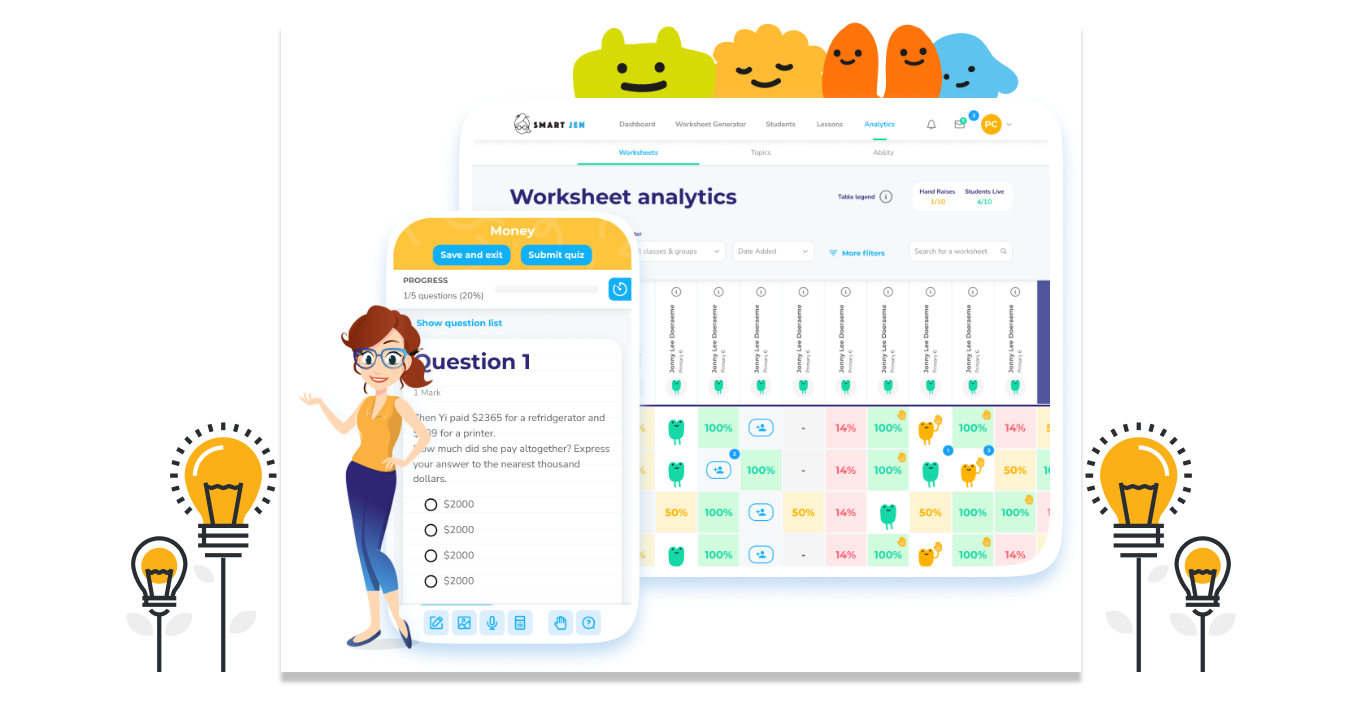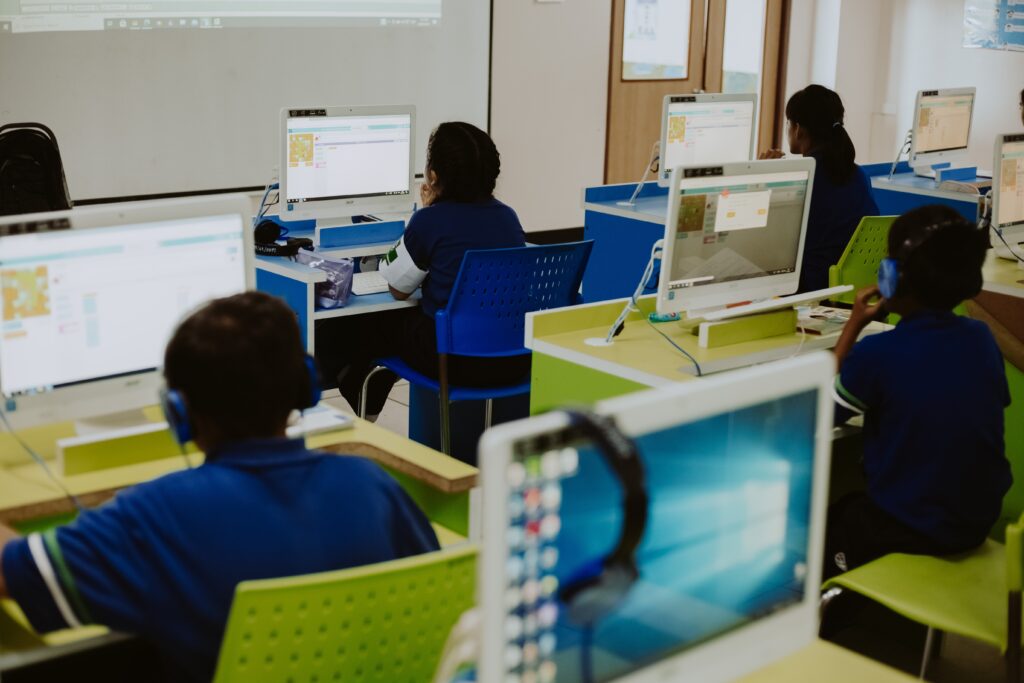Online assessments have become a popular way to assess learners’ learning and measure their progress. This article provides tips on conducting effective online formative and summative assessments. These tips provide practical guidance for educators looking to make the most of online assessment tool.
Definition of Formative and Summative Assessments
Formative and summative evaluations are used in education to evaluate learners’ learning and progress. It is essential to comprehend the differences between the two to choose the right type of assessment for a given situation.
Formative assessments are used to monitor learner learning during the learning process. These assessments are frequently informal and provide learners and educators with ongoing feedback.
Quizzes, checklists, and class discussions are examples of formative assessments. The primary goal of formative assessments is to assist learners in improving their learning and identifying their weaknesses where they can seek additional assistance.
On the other hand, summative assessments are used at the end of a learning period to evaluate learners’ learning. These assessments are frequently more formal and provide a final assessment of learners’ comprehension.
Final exams, standardised tests, and research papers are examples of summative assessments. Summative assessments are used to assess their learning and demonstrate understanding of the lesson.
Importance of Assessments in Education
Assessments plays a critical role in the education process. The importance of assessments in education must be considered, whether it’s formative or summative assessments. Here are some key reasons why assessments are so important in education.
Identifying Areas for Improvement
Assessments provide valuable feedback on learners’ learning, which can help educators identify areas of strengths and weaknesses where learners need further support. This information can then be used to adjust teaching strategies and help learners improve their understanding of the lesson.
Read more: How to Identify and Address Learning Gap Effectively in Your Classroom
Encouraging Learner Engagement
Assessments help to keep learners engaged in their own learning process by providing clear goals and objectives to work towards. They also provide learners with regular feedback on their progress, which can motivate them to work harder.
Providing Accountability
Assessments hold both learners and educators accountable for their performance. Learners must demonstrate their understanding of the lesson, while educators must provide quality instruction and support for their learning.
Supporting Curriculum Design
Assessments help with the design of the curriculum and ensure that learning objectives are being met. They provide valuable data that can be used to decide the most effective teaching strategies and the content that should be covered in the classroom.
Measuring Learner Achievement
Perhaps most importantly, assessment provides a way to measure learners’ achievement and determine whether they have met the desired learning outcomes. This information is crucial for deciding their placement, graduation, and post-secondary education.
Shift to Online Learning and the Need for Effective Online Assessment Strategies
The COVID-19 pandemic has led to a significant shift towards online learning, presenting new challenges for educators in assessing learners’ understanding. Educators must adopt effective online assessment strategies to evaluate learner learning in a timely manner.
One challenge is maintaining the reliability and validity of online assessments, as cheating and academic dishonesty can become a concern. Educators must find ways to prevent this, such as using online proctoring tools or designing assessments that discourage cheating, such as randomising the order of the questions.
Another challenge is the need for face-to-face interaction, making it more difficult to gauge learners’ understanding and provide feedback. To address this, online assessments must be designed to provide clear and meaningful feedback to learners.
To meet these challenges, there is a growing need for technology that can support effective online assessment. HeyHi is a platform that offers a wide range of features and tools to help educators effectively evaluate learners’ learning.
One of the key benefits of HeyHi is its cutting-edge machine learning and AI-enabled technologies, which can quickly identify learners’ strengths and weaknesses through detailed analytics and reports based on millions of learning data points. The platform’s question bank feature enables educators to create customised worksheets tailored to their learners’ needs quickly. This can help to ensure that assessments are relevant and engaging for students. So why wait? Give HeyHi a try now!

Formative Assessment Tips
Formative assessment is an ongoing process that helps educators monitor learners’ learning and adjust teaching strategies accordingly. In an online learning environment, formative assessment is even more important.
It helps to ensure that learners are engaged, motivated and making progress. Here are some tips for incorporating formative assessment into your online teaching:
Incorporating Regular Quizzes and Polls
Regular quizzes and polls can help you gauge learners’ understanding and adjust your teaching strategies accordingly. They can assess knowledge retention and provide immediate feedback to learners.
Using Online Collaboration Tools for Group Work and Peer Feedback
Group work and peer feedback can provide valuable formative assessment opportunities. By using online collaboration tools, learners will not be constrained by location and can work together on projects, hold discussions and provide feedback to one another, helping to deepen their understanding of the lesson.
Providing Immediate Feedback on Assignments and Projects
Providing immediate feedback on assignments and projects is crucial in an online learning environment. This helps learners understand what they did well and what they need to improve, allowing them to adjust their learning strategies.
Utilising Technology to Facilitate Self-Assessment and Self-Reflection
Technology can be a powerful tool for facilitating self-assessment and self-reflection. For example, learners can use online portfolios to document their progress, reflect on their learning and assess their work.
Read more: A Complete Guide Of Formative Assessment in K12 Schools
Summative Assessment Tips
Summative assessments are an important part of the evaluation process, allowing educators to determine the overall success of learner learning.
In the online learning environment, summative assessments must be carefully planned and executed to ensure their reliability and validity. Here are some tips for conducting effective summative assessments in the online environment:
Plan Ahead and Giving Clear Guidelines for Assessments
Summative assessments should be planned well in advance, and guidelines for assessments should be clear and concise. This helps to ensure that learners understand what is expected of them and can adequately prepare for the assessments.
Using a Variety of Assessment Methods
A variety of assessment methods should be used, such as written essays, presentations, and projects. This allows educators to assess learner learning and provides a well-rounded picture of their understanding.
Ensuring the Security and Integrity of Online Exams
The security and integrity of online exams are crucial in an online learning environment. Measures should be taken to prevent cheating and ensure that exams are secure and fair. This may include using online proctoring tools or designing exams that discourage cheating.
Providing Timely and Thorough Feedback on Summative Assessments
Feedback on summative assessments is an essential part of the evaluation process. Feedback should be timely and thorough, allowing learners to understand what they did well and what they need to improve on.
Read more: A Guide to Summative Assessment in the Classroom
Conclusion
To sum up, formative and summative assessments are essential to effective online learning. Educators can monitor learning progress, provide ongoing feedback and support, and comprehensively evaluate learners’ understanding using formative and summative assessments.
It is critical to evaluate and adjust assessment strategies regularly to ensure that they are effective and meet the needs of learners. The use of technology and online tools can help educators make data-driven decisions about teaching and learning by facilitating the ongoing evaluation of assessment strategies.
Assessing learners and encouraging them to take an active role in their learning is also an essential part of the online learning process. Learners can gain a deeper understanding of their own learning and develop critical thinking and problem-solving skills by providing self-assessment, self-reflection, and peer feedback opportunities.
